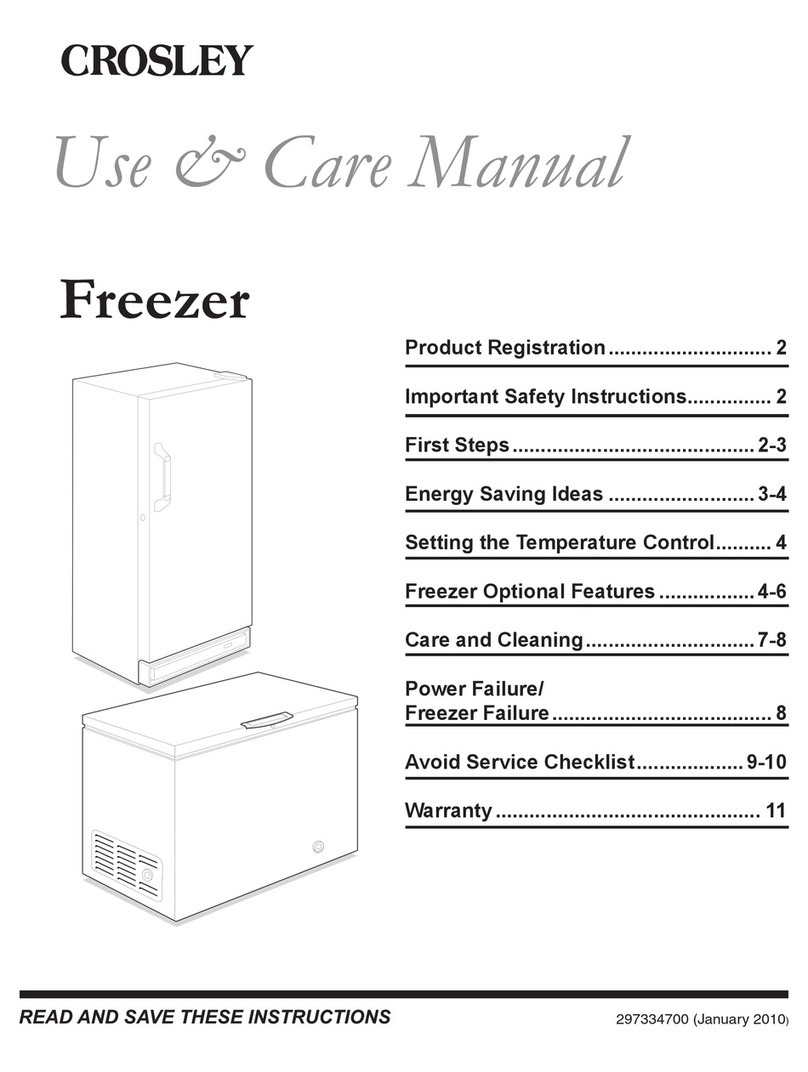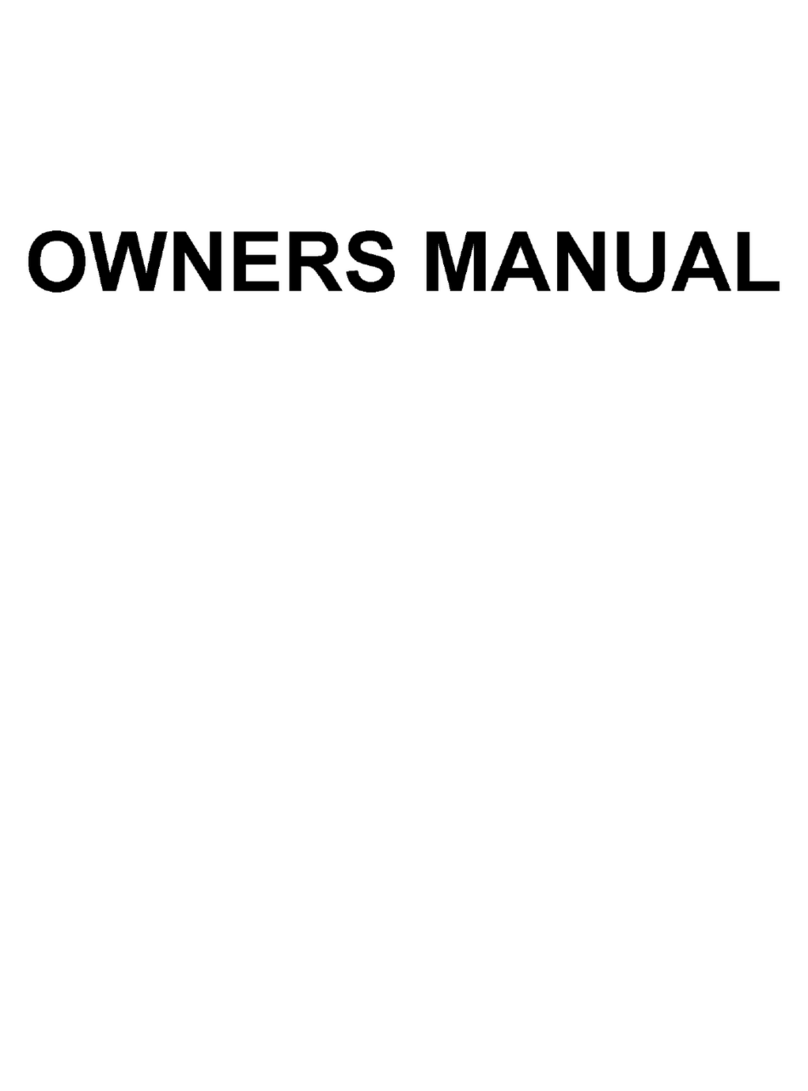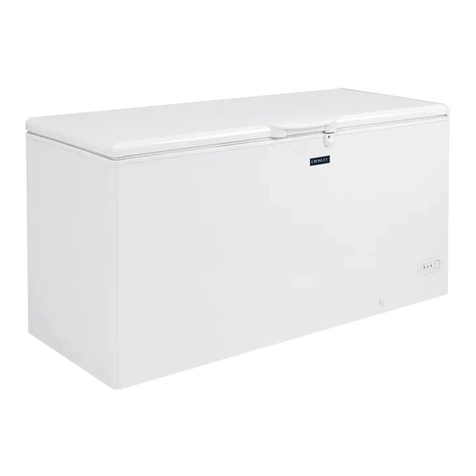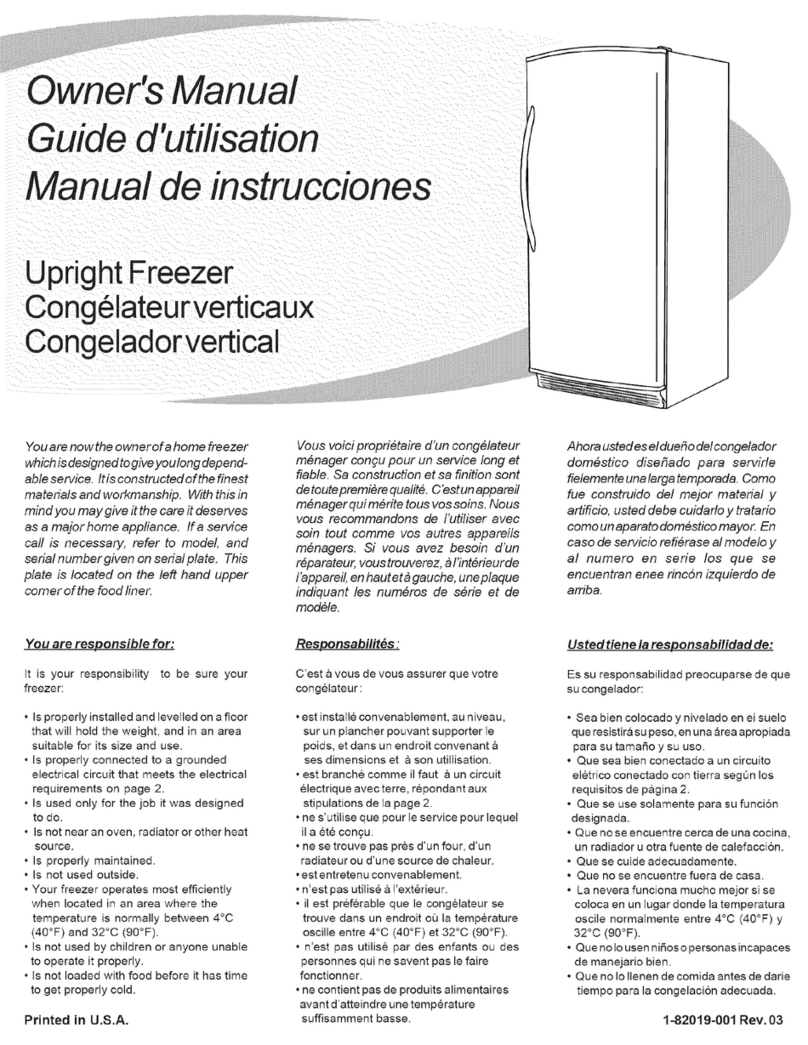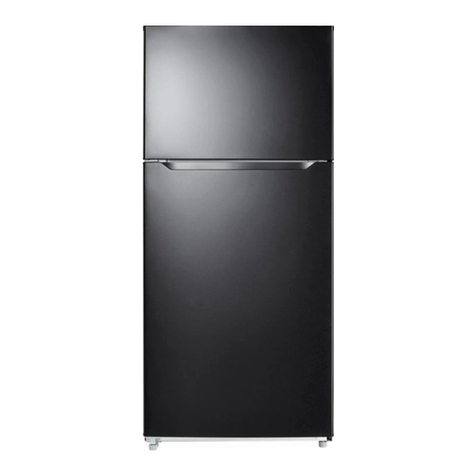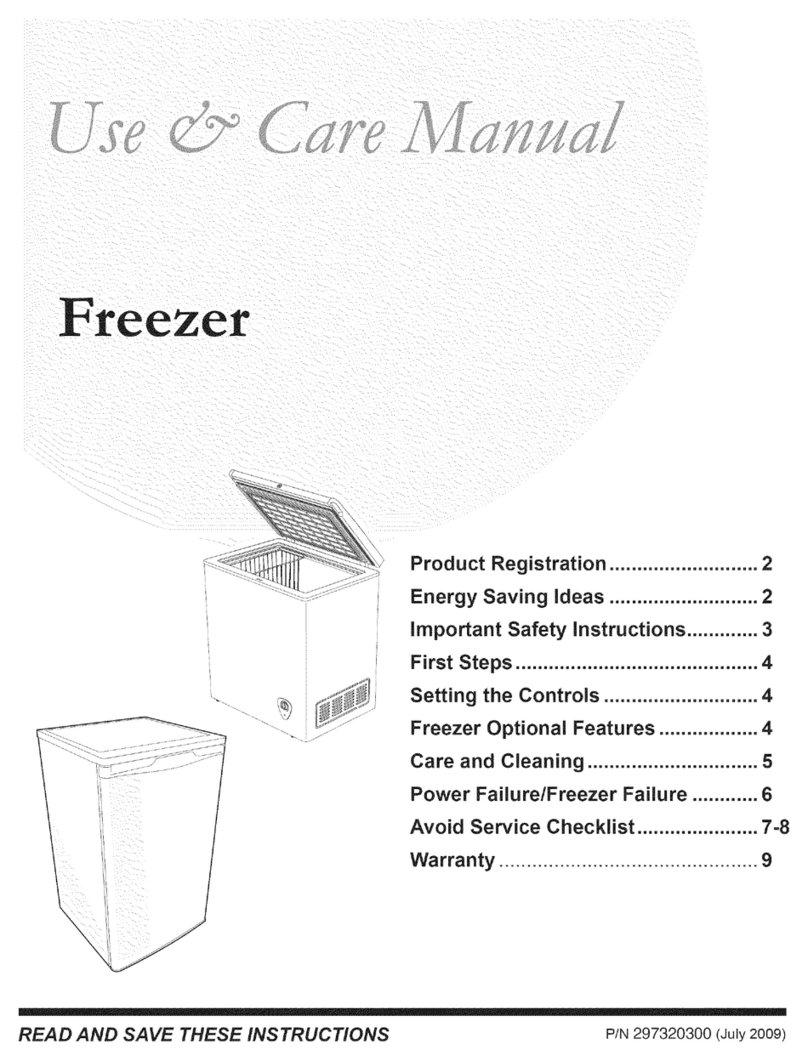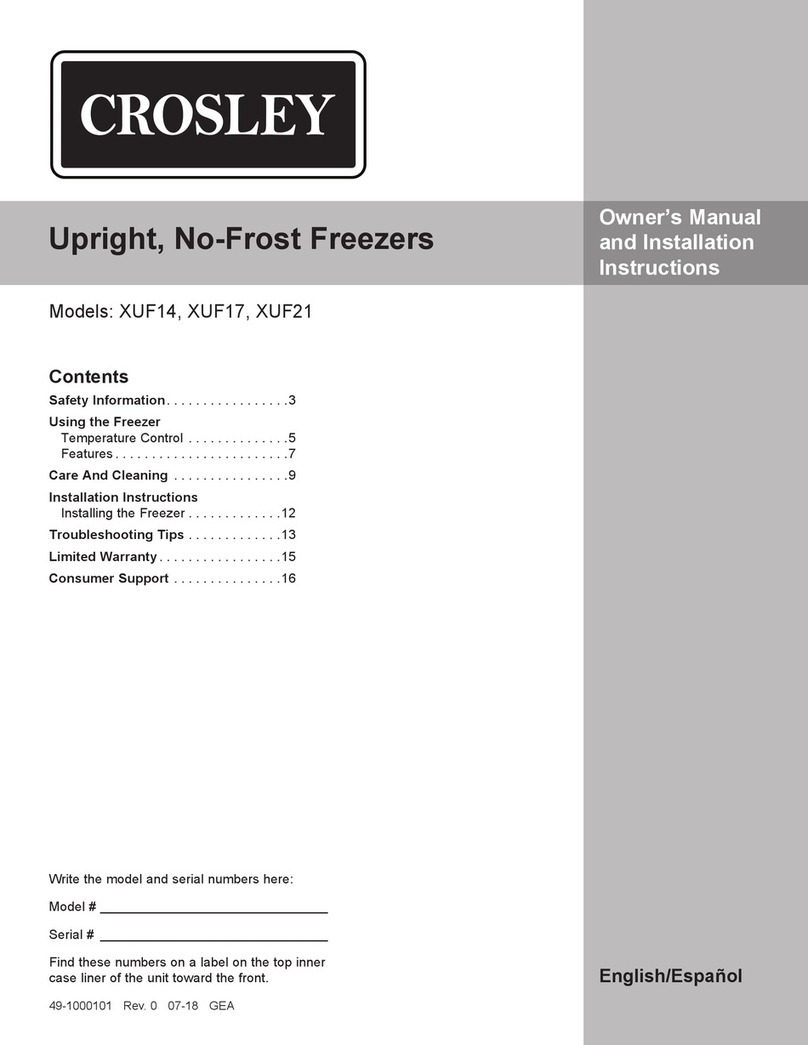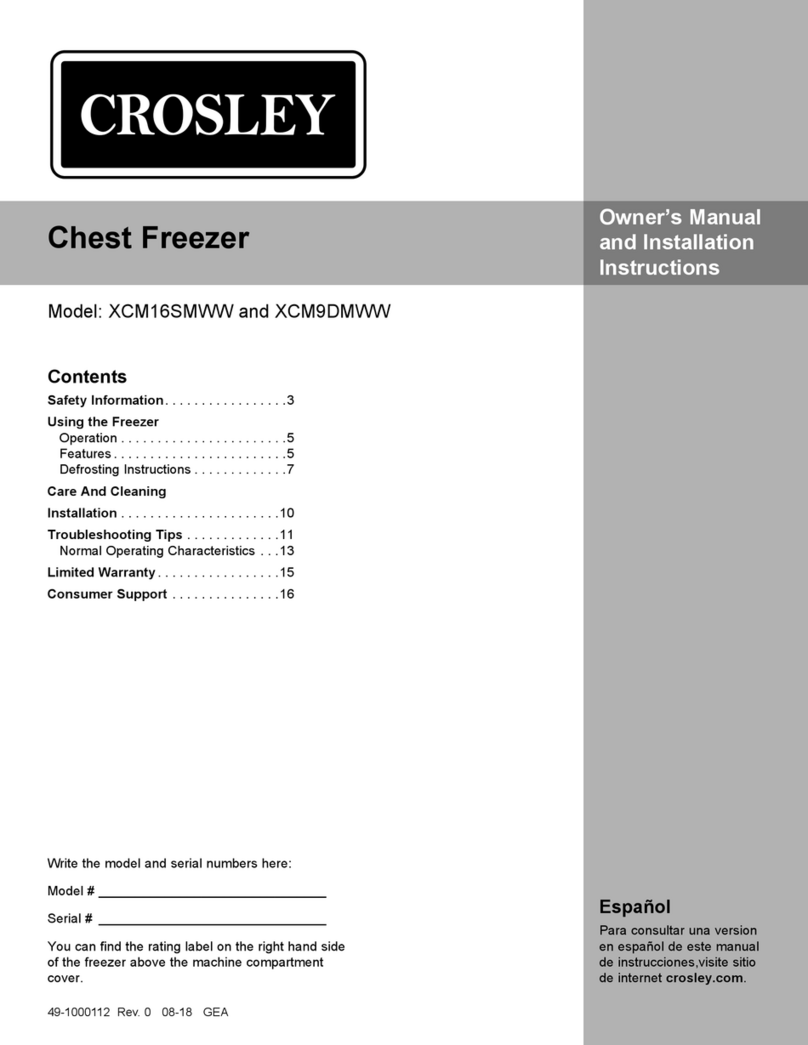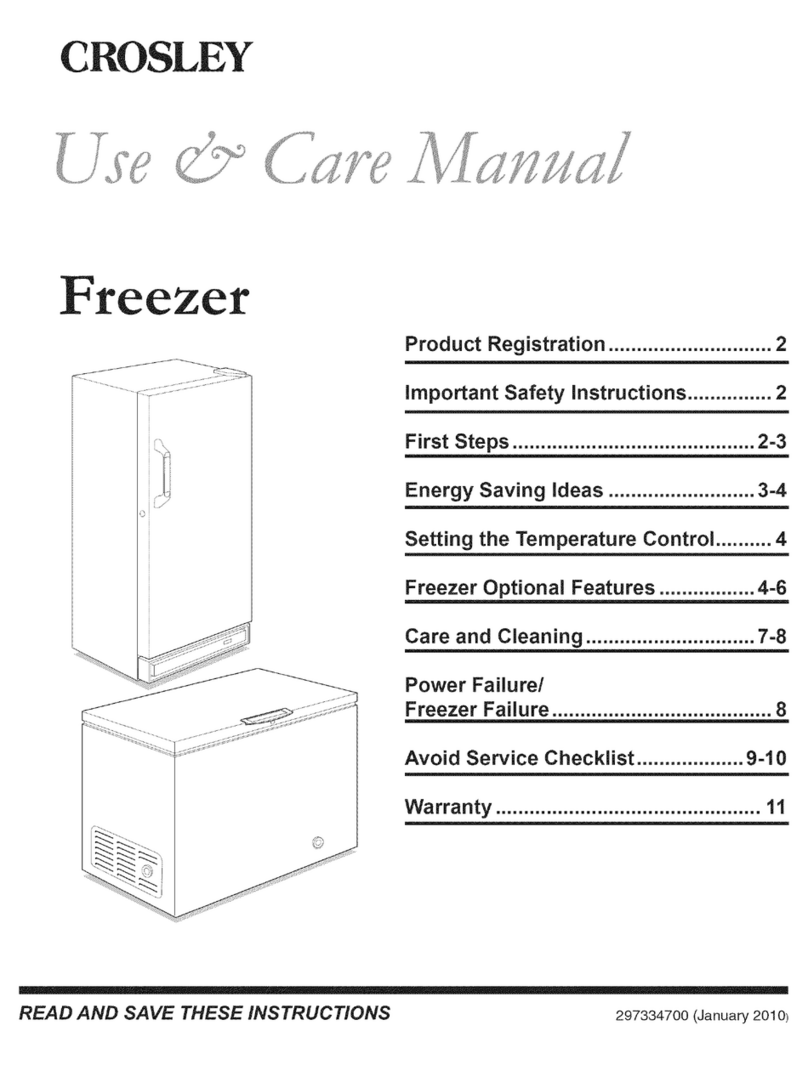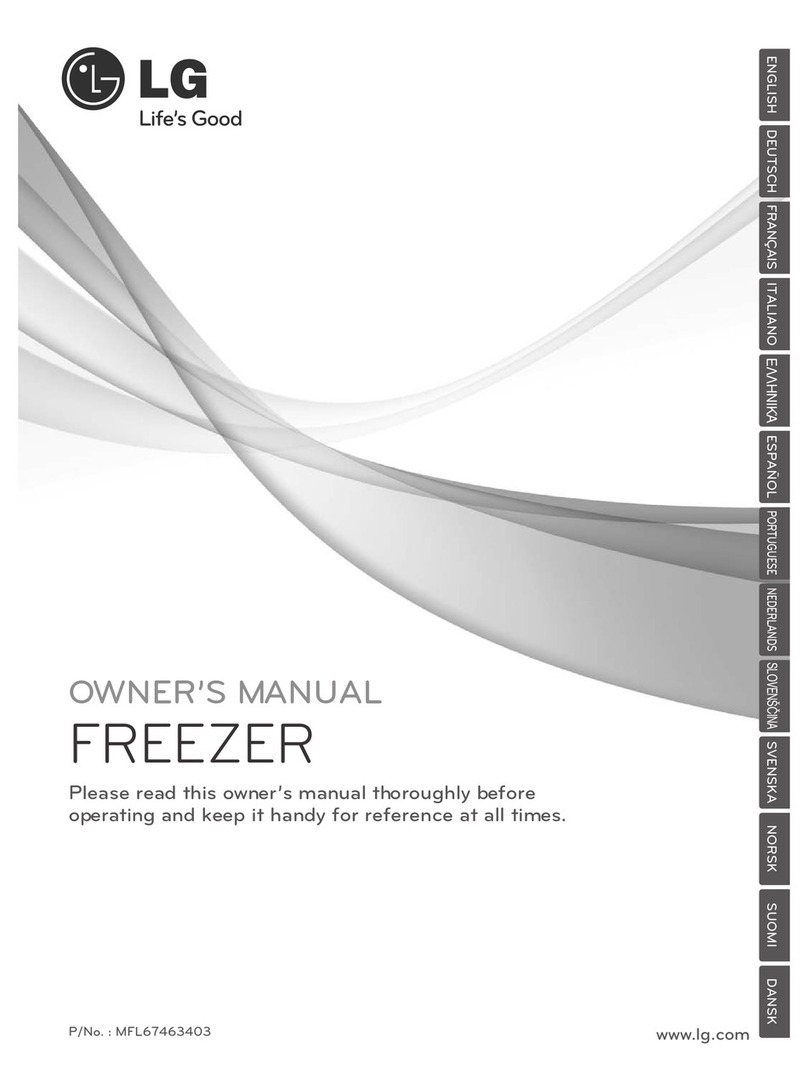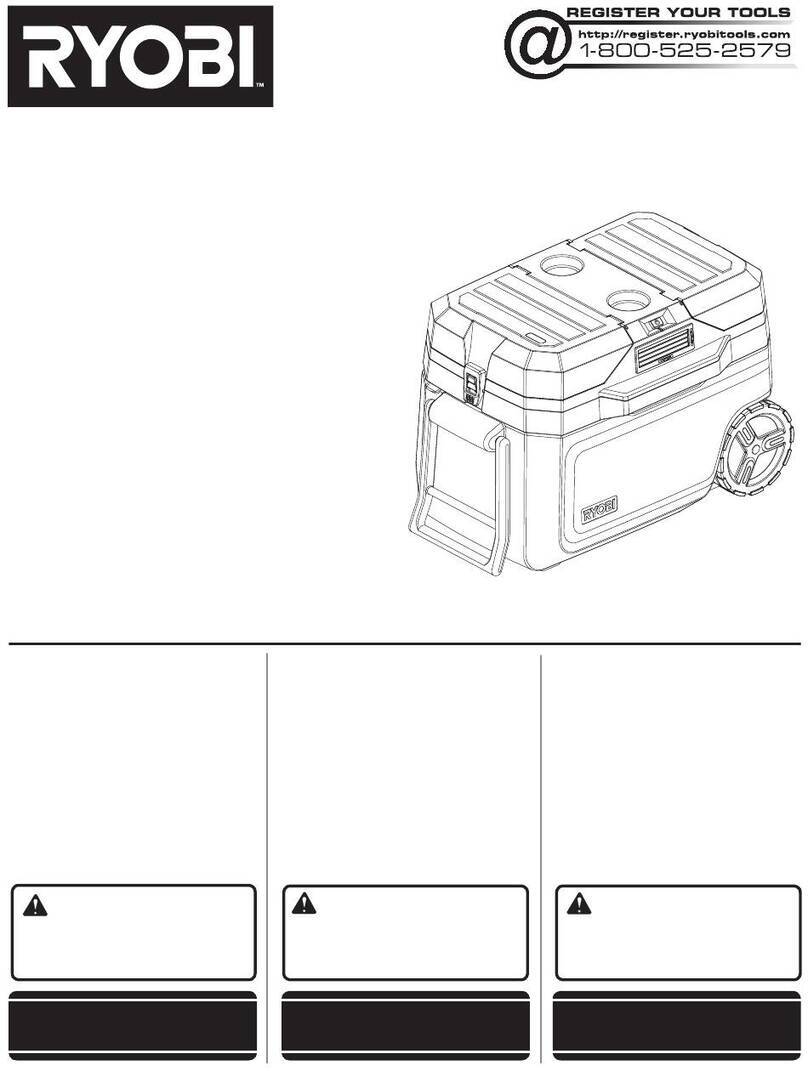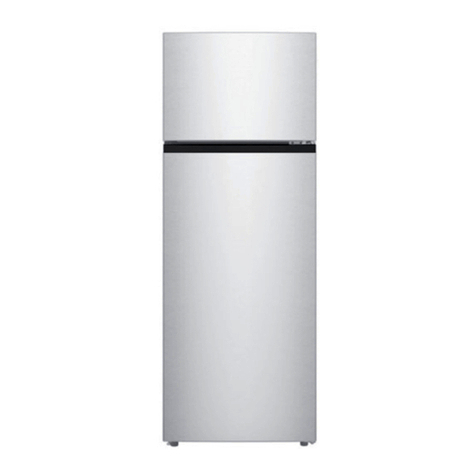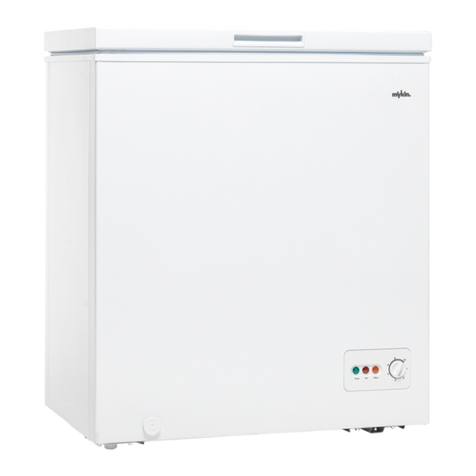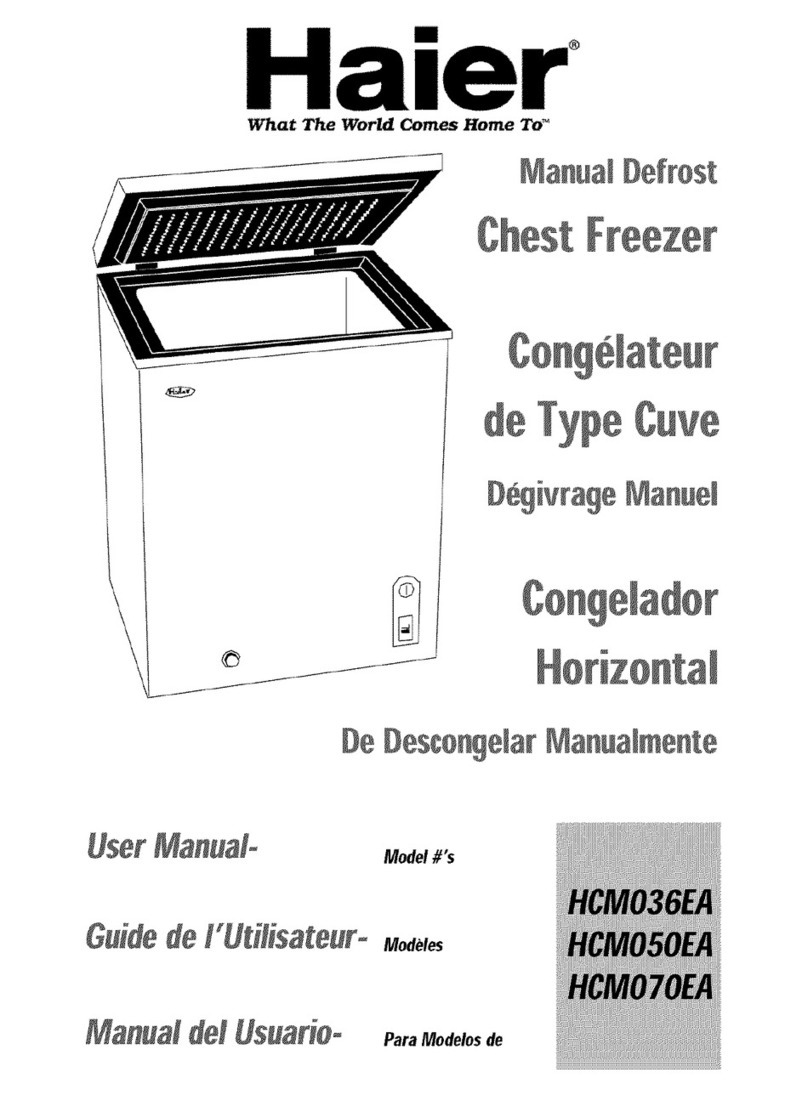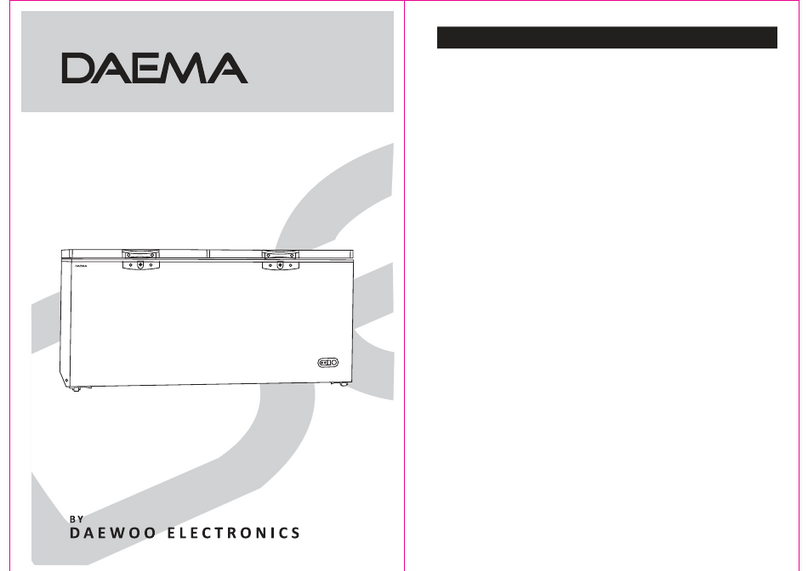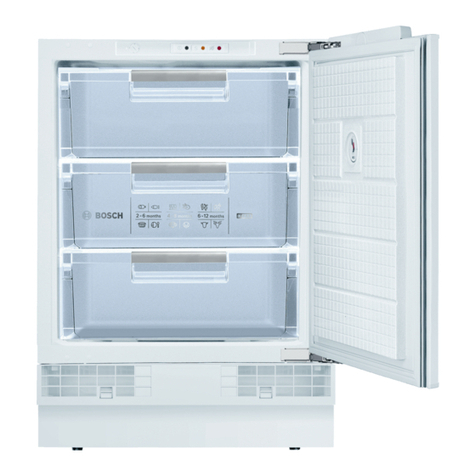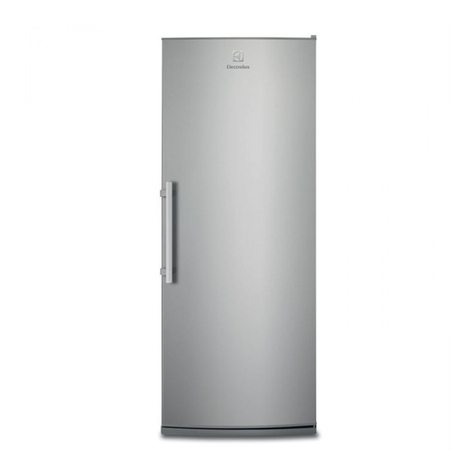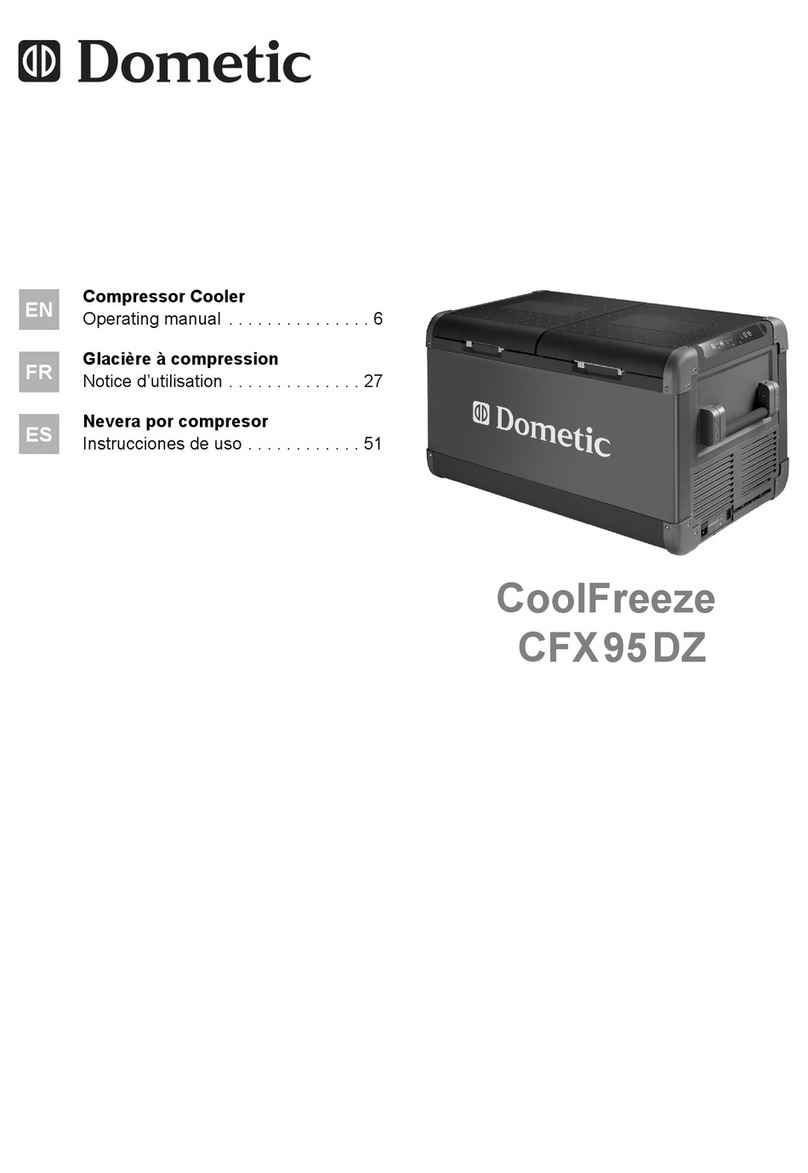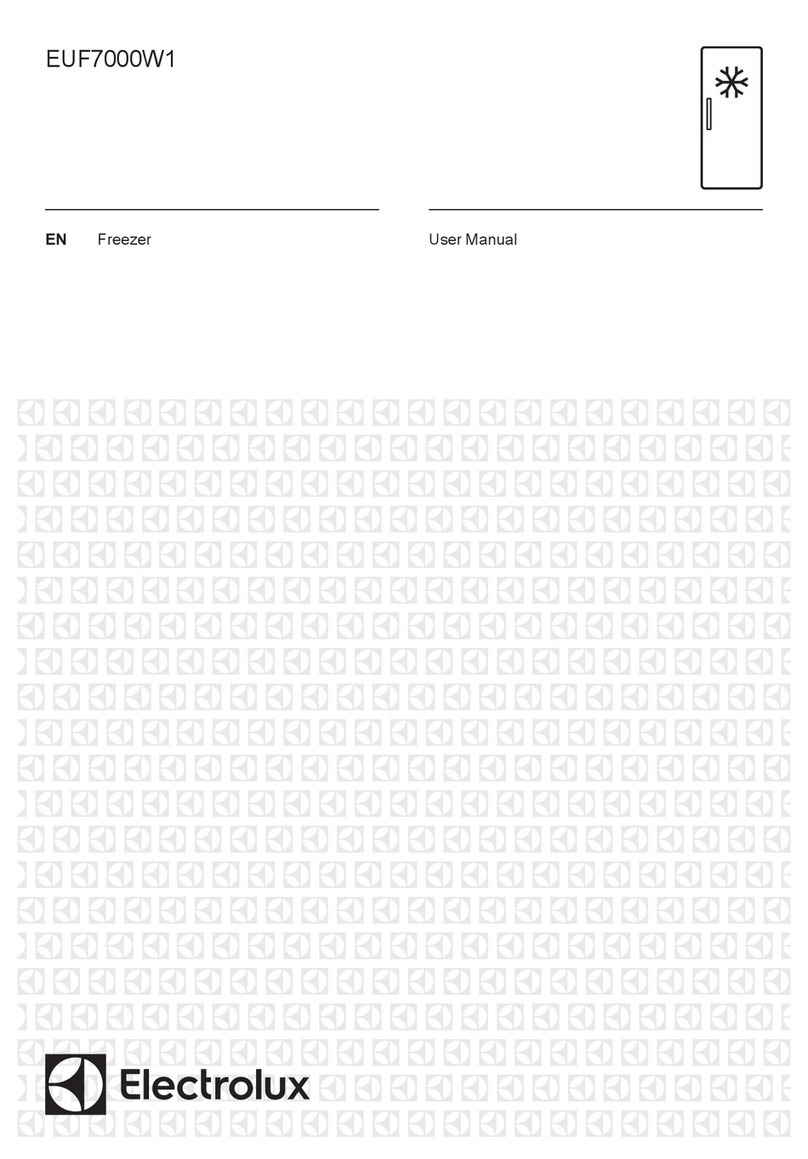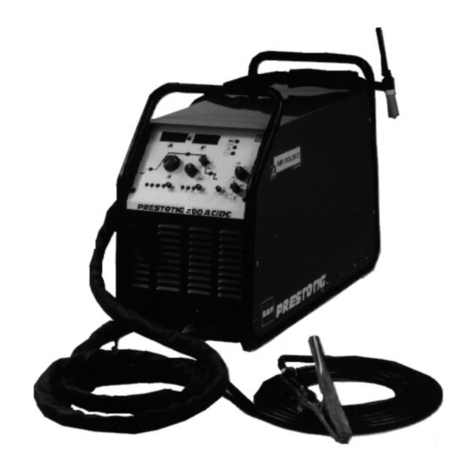
49-1000111 Rev. 0 3
CAUTION To reduce the risk of injury when using your freezer, follow these basic safety precautions.
■ Donotcleanfreezerwithwarmwaterwhenitis
cold. Components may break if exposed to sudden
temperature changes or impact, such as bumping or
dropping.
■ Keepfingersoutofthe“pinchpoint”areas;
clearances between the lid and cabinet are
necessarily small. Be careful closing lid when
children are in the area.
■ Donottouchthecoldsurfacesinthefreezer
compartment when hands are damp or wet, skin
may stick to these extremely cold surfaces.
■ Donotrefreezefrozenfoodswhichhavethawed
completely.
READ AND SAVE THESE INSTRUCTIONS
WARNING To reduce the risk of fire, explosion, electric shock, or injury when using your freezer, follow
these basic safety precautions:
■ Thisfreezermustbeproperlyinstalledandlocatedin
accordance with the Installation Instructions before it
is used.
■ Unplugthefreezerbeforemakingrepairsor
cleaning.
NOTE: Power to the freezer cannot be disconnected
by any setting on the control panel.
NOTE: Repairs must be performed by a qualified
Service Professional.
■ Replaceallpartsandpanelsbeforeoperating.
■ Donotstoreorusegasolineorotherflammable
vapors and liquids in the vicinity of this or any other
appliance.
■ Donotstoreexplosivesubstancessuchasaerosol
cans with a flammable propellant in this appliance.
■ Donotuseanextensioncord.
■ Topreventsuffocationandentrapmenthazardsto
children, remove the lid from any freezer before
disposing of it or discontinuing its use.
■ Toavoidseriousinjuryordeath,childrenshouldnot
stand on, or play in or with the appliance.
■ Childrenandpersonswithreducedphysical,sensory
or mental capabilities or lack of experience and
knowledge can use this appliance only if they are
supervised or have been given instructions on safe
use and understand the hazards involved.
■ Thisapplianceisintendedtobeusedinhousehold
and similar applications such as: staff kitchen areas
inshops,officesandotherworkingenvironments;
farmhouses;byclientsinhotels,motels,bed
&breakfastandotherresidentialenvironments;
catering and similar non-retail applications.
IMPORTANT SAFETY INFORMATION
READ ALL INSTRUCTIONS BEFORE USING THE APPLIANCE
WARNING EXPLOSION HAZARD Flammable Refrigerant
This appliance contains isobutane refrigerant,
R600a, a natural gas with high environmental
compatibility. However, it is also combustible.
Adhere to the warnings below to reduce the risk of
injury or property damage.
1. When handling, installing and operating the
appliance, care should be taken to avoid damage to
the refrigerant tubing.
2. Service shall only be performed by authorized
servicepersonnel.Useonlymanufacturer-authorized
service parts.
3. Dispose of appliance in accordance with Federal
and Local Regulations. Flammable refrigerant and
insulation material used require special disposal
procedures. Contact your local authorities for the
environmentally safe disposal of your appliance.
4. Keepventilationopeningsintheappliance
enclosures or in the built-in structure clear of
obstruction.
5. Do not use mechanical devices or other means to
accelerate the defrosting process.
6. Do not damage refrigerant circuit.
7. Do not use electrical appliances inside the food
storage compartment of the appliance.
SAFETY INFORMATION

